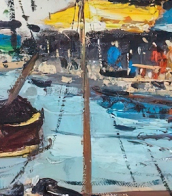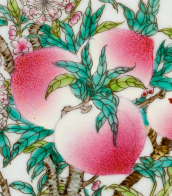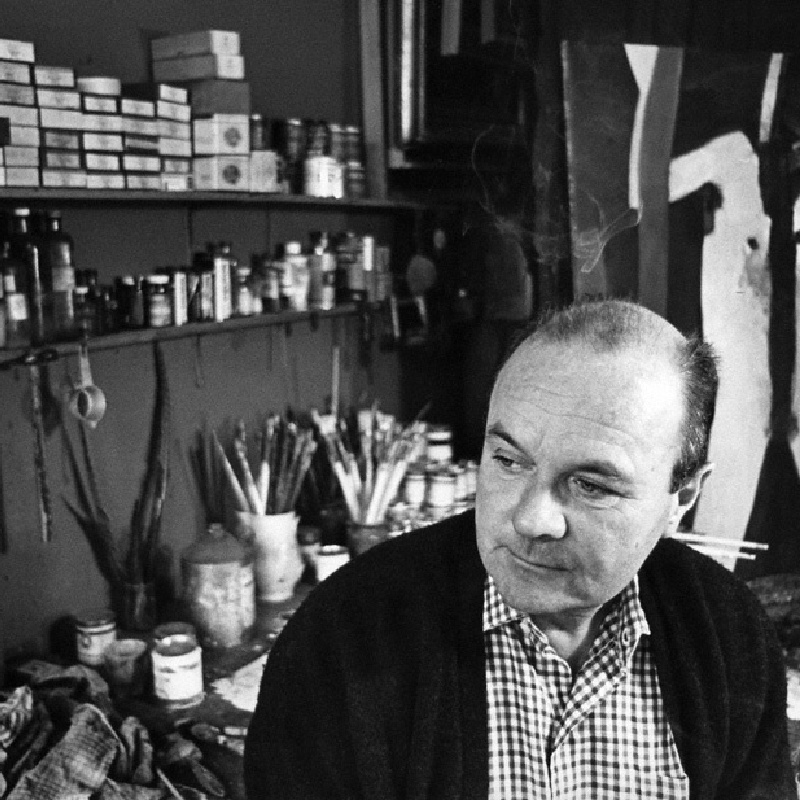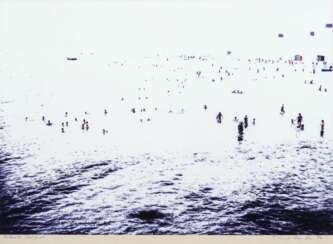bathers

Manfred Henninger was a German painter, draughtsman, graphic artist, ceramist and university lecturer. As an artist, he belongs to the lost generation.
His works often revolve around the themes of the human figure and landscape and can be described as late impressionist.
Manfred Henninger was a member of the Deutscher Künstlerbund.


Ludwig von Hofmann is a German painter, graphic artist and designer. The influence of Historicism, Art Nouveau, Symbolism and New Realism can be felt in the works of Ludwig von Hofmann at different periods of his art.
Ludwig von Hoffmann studied painting at the academies of fine arts in Dresden, Karlsruhe and Munich. Since 1898 he was a member of the cultural movement Berlin Secession.
After the National Socialists came to power in Germany, some of his works were classified as degenerate art, but most of them continued to be exhibited in museums in Germany.


Herbert Rolf Schlegel was a German painter and a representative of the Romantic version of New Objectivity.



Richard William Hamilton was a pivotal figure in the evolution of modern art, seamlessly blending traditional mediums with emerging cultural commentary. Born in London in 1922, Hamilton emerged as a leading voice in the pop art movement, a genre that sought to bridge the gap between high art and popular culture. His work, characterized by its innovative use of materials and its critical eye on consumer society, positioned him as a critical link between art's past and its rapidly evolving future.
Hamilton's influence is perhaps best encapsulated in his iconic collage, "Just what is it that makes today's homes so different, so appealing?" Created for the This Is Tomorrow exhibition in 1956, this piece is widely regarded as one of the first works of pop art, predating the more widely recognized contributions of American artists like Andy Warhol and Roy Lichtenstein. By integrating images from magazines, advertisements, and other mass media, Hamilton crafted a visually striking critique of contemporary consumerism and its pervasive impact on the domestic sphere.
Beyond his contributions to pop art, Hamilton's legacy is also preserved in his role as an educator and theorist. His writings and teachings have influenced generations of artists, encouraging them to explore the intersections of art, technology, and society. His works are held in high esteem and are featured in prestigious collections worldwide, including the Tate Gallery in London and the Museum of Modern Art in New York.
For collectors and experts in art and antiques, Hamilton's oeuvre offers a fascinating window into the mid-20th century's cultural shifts. His ability to capture the zeitgeist of his time, while also pushing the boundaries of what art could be, makes his work both historically significant and continually relevant.
To stay informed about new product sales and auction events related to Richard William Hamilton, we invite you to sign up for updates. This subscription ensures you remain at the forefront of the art and antiques world, with a focus on one of its most influential figures.


Sergey Yurievich Sudeikin (Russian: Сергей Юрьевич Судейкин), also known as Serge Soudeikine, was a Russian artist and set-designer renowned for his vivid contributions to the world of art and theater. Born on March 19, 1882, in Smolensk, Russia, and passing away on August 12, 1946, in Nyack, New York, Sudeikin's career was a testament to his versatile talent and innovative vision. He was closely associated with prestigious institutions such as the Ballets Russes and the Metropolitan Opera, showcasing his unique ability to blend artistic and theatrical design.
Sudeikin's journey in the arts began at the Moscow School of Painting, Sculpture and Architecture, where he was notably banned for his bold, "obscene drawings". This rebellious start led him to join the Mir Iskusstva (World of Art) movement, solidifying his place among Russia's avant-garde artists. His circle included significant figures like poet Mikhail Kuzmin and impresario Serge Diaghilev, highlighting his integral role in Russia's cultural scene before emigrating to the West.
Among Sudeikin's notable works are his set and costume designs for Diaghilev's production of "La tragédie de Salomé" and his collaboration on "The Rite of Spring". After moving to the United States, he continued to leave his mark on the theater world, with works like the set design for the original Broadway production of "Porgy and Bess". Sudeikin's style is recognized for its theatricality, vivid color use, and often incorporated themes of irony and tragedy, deeply influencing the visual arts and theater design of the 20th century.
His artwork, including famous pieces like "Carousel", "Venetian masquerade", and "Portrait of Nina Shik", can be found in galleries and private collections worldwide, highlighting his enduring appeal. Despite facing challenges in gaining widespread recognition during his lifetime, Sudeikin's contributions to art and theater have solidified his legacy as a pioneering artist and designer.
Collectors and experts in art and antiques continue to celebrate Sergey Yurievich Sudeikin's work for its innovative approach and historical significance. To stay updated on sales and auction events related to Sudeikin's work, signing up for updates is highly recommended. This ensures that enthusiasts and collectors alike do not miss out on the opportunity to own a piece of this remarkable artist's legacy.


John Keith Vaughan was a British painter.


Émile Bernard, a French painter, was a significant figure in the Post-Impressionist movement. He is most famously associated with the development of Cloisonnism, a painting style characterized by bold outlines and flat, vivid color planes, and he played a role in Synthetism, a synthesis of forms and colors in art.
Bernard's artistic journey was influenced by his interactions with notable artists such as Paul Gauguin, Vincent van Gogh, and Louis Anquetin. His works, which often explored themes of symbolism and religious imagery, ranged from traditional paintings to engravings and illustrations. One of his notable works, "Madeleine au Bois d'Amour," is displayed at the Musée d'Orsay in Paris.
Despite his early success and influence, Bernard's artistic trajectory took a turn towards classicism later in life, distancing himself from the avant-garde styles he once embraced. His extensive travel experiences, particularly his time in Egypt, significantly impacted his art, leading to a broader range of stylistic elements in his later works.
To stay updated on the latest events and auctions related to Émile Bernard and his work, sign up for our newsletter. You'll receive timely alerts about new product sales and upcoming auction events related to Émile Bernard's art.

.jpg)
Jean-François Millet was a French artist and one of the founders of the Barbizon school in rural France. Millet is noted for his paintings of peasant farmers and can be categorized as part of the Realism art movement. Toward the end of his career, he became increasingly interested in painting pure landscapes. He is known best for his oil paintings but is also noted for his pastels, conte crayon drawings, and etchings.


John Keith Vaughan was a British painter.


John Christopher Wood was an English painter.












































































